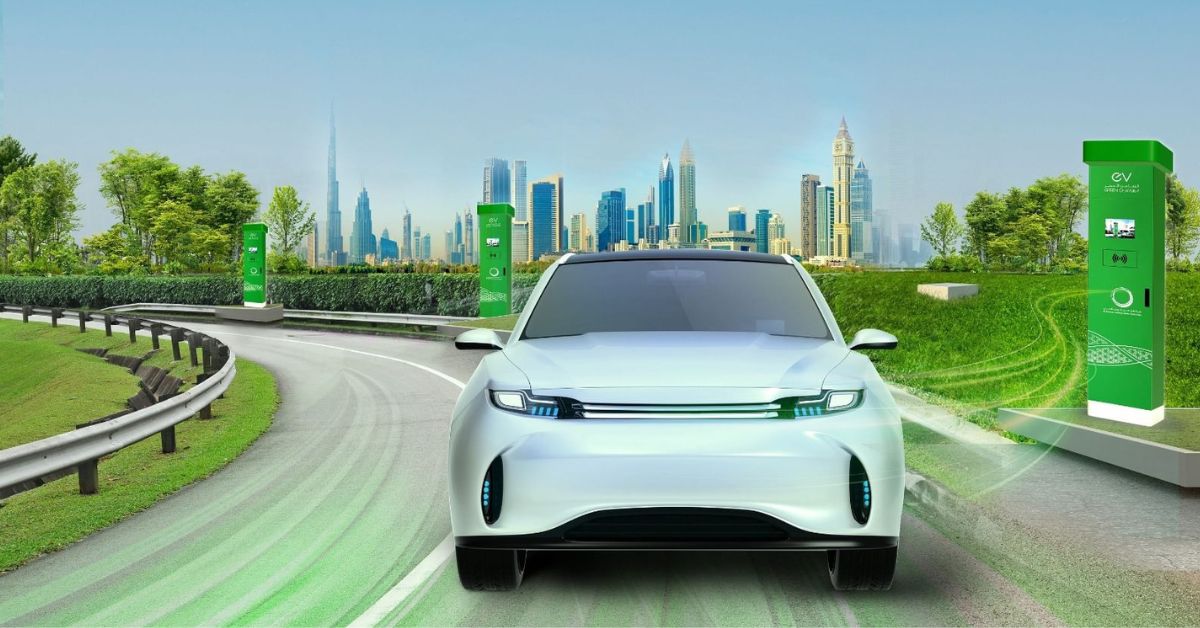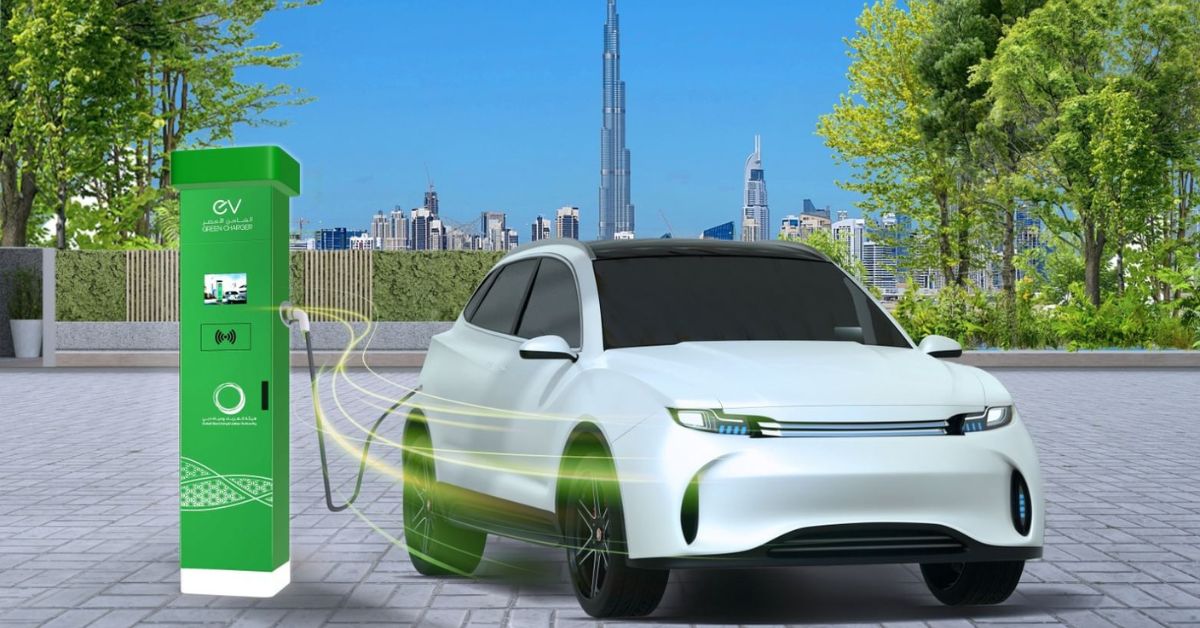DUBAI, UAE — In the heart of the GCC, a transformation is underway that transcends traditional transportation boundaries. Driven by a collective commitment to environmental sustainability and the imperative to reduce carbon footprints, the region’s countries are navigating towards a future defined by “Green Mobility.”
This paradigm shift in transportation signifies a pivotal moment for the region, encompassing innovative solutions, strategic partnerships, and a steadfast vision to forge a more sustainable and eco-friendly landscape.
Amidst rapid urbanization, economic growth, and heightened climate awareness, the GCC nations are uniquely positioned to lead the charge towards greener transportation alternatives.
From ambitious clean energy strategies to groundbreaking initiatives by pioneering companies, the GCC is emerging as a crucible for sustainable mobility solutions. This approach extends beyond transportation, reflecting the profound commitment of these nations to a greener, more resilient future.
At A Glance GCC's Green Mobility Transformation: The GCC region is undergoing a significant transformation towards "Green Mobility," driven by a commitment to environmental sustainability and reducing carbon footprints. Strategic Shift in Transportation: This shift represents a pivotal moment for the region, integrating innovative solutions and strategic partnerships to create a sustainable and eco-friendly landscape. Leading the Green Charge: GCC nations, amidst rapid urbanization and economic growth, are positioned to lead in greener transportation alternatives, with a focus on clean energy strategies and groundbreaking initiatives. UAE's Electric Vehicle Readiness: The UAE ranks first in the region and seventh globally in electric vehicle readiness, according to the Global Electric Mobility Readiness Index (GEMRIX) 2023. UAE's Clean Energy and Net Zero Strategies: The UAE has launched the Clean Energy Strategy 2050 and Net Zero Carbon Emissions Strategy 2050, targeting 100% clean energy power generation by 2050. Electric Vehicles in Dubai: Over 42,000 electric vehicles are expected on Dubai's roads by 2030, with the RTA planning a zero net emissions public transportation system by 2050. Saudi Arabia's Vision 2030: Saudi Arabia is investing in sustainable public transport infrastructure, including electric buses, as part of its Vision 2030 for environmental sustainability. Challenges and Opportunities in Green Mobility: The GCC faces challenges like the need for sustainable charging infrastructure but sees opportunities in reducing pollution, fuel costs, and emissions.
Exploring green mobility in the GCC reveals the initiatives, challenges, and triumphs that characterize this transformative journey. From the introduction of electric vehicles to the exploration of alternative solutions and regional efforts towards a net-zero emission future, the GCC’s path towards sustainable transportation represents not just an environmental imperative but also a strategic vision. This vision aims for a future where innovation, economic prosperity, and ecological stewardship are in harmony.
Key developments
Significant efforts have been made to reduce carbon emissions in the transportation sector. According to the latest Global Electric Mobility Readiness Index (GEMRIX) 2023, the UAE ranks first in the region and seventh globally in its readiness to transition to electric vehicles.
The UAE has also launched the Clean Energy Strategy 2050 and the Net Zero Carbon Emissions Strategy 2050, aiming to produce 100 percent of its power from clean energy sources by 2050, as noted by Raji Hattar, CSO of Aramex.
In Dubai, over 42,000 electric vehicles are expected to be on the roads by 2030. The Dubai Roads and Transport Authority (RTA) has also recently announced a long-term plan to transition public transportation to zero net emissions by 2050.
At the same time, Saudi Arabia, the largest economy in the region, has outlined its Vision 2030, focusing on environmental sustainability. The kingdom is investing in public transport infrastructure, such as electric buses, and is encouraging the use of electric and hybrid vehicles. Similarly, other GCC countries are developing comprehensive strategies to promote the adoption of green transportation.
Challenges and opportunities
The GCC region, known for its vast oil reserves, has traditionally relied heavily on fossil fuels for energy and transportation. However, the recognition of the environmental consequences of such practices has spurred a shift towards sustainable alternatives.
With rapidly growing urbanization and population, the demand for transportation has surged, presenting both challenges and opportunities for adopting green mobility solutions.
While challenges like the need for sustainable charging infrastructure exist, Hattar sees opportunities to reduce air and sound pollution, fuel costs, and associated emissions. Green mobility contributes to environmental well-being, enhances resilience, and generates green jobs.
In an interview with TRENDS, Hattar said, “One of the main hurdles for EV market uptake in the region could be the need for more sustainable charging infrastructure. However, there are successful examples and lessons to be learned from countries like the UAE, with a significant push for increasing charging stations. For instance, EV Green Charging Stations in Dubai will increase from 370 to 1,000 Green Charging Stations by 2025.”
The GCC’s outlook is promising, thanks to increased public awareness of the issue and innovative responses from nations like the UAE, which are working to scale up green mobility. According to Hattar, this trend shows no signs of slowing down.
Several nations, including the UAE, Bahrain, Kuwait, Oman, and Saudi Arabia, have committed to achieving zero emissions by 2050.
There is also a focus on hydrogen-based mobility, as mentioned by Hattar. At the World Government Summit 2023 earlier this year in Dubai, it was announced that a feasibility study will be conducted to establish, develop, and operate a joint pilot project for the use of hydrogen in mobility.
Moreover, the UAE Energy Strategy 2050 aims to solidify the UAE’s role as a producer and supplier of low-emission hydrogen by 2031. This strategy is set to boost the global hydrogen economy and increase local hydrogen production to 1.4 million tons per annum (mtpa) by 2031, consisting of 1 mtpa of green hydrogen and 0.4 mtpa of blue hydrogen. The targets are to reach 7.5 mtpa by 2040 and 15 mtpa by 2050, according to Hattar.
Sectors poised for transformation
Nearly all sectors in the GCC are likely to benefit from the shift to green mobility, with transportation and logistics being primary beneficiaries. This transition is expected to reduce emissions, fuel, and maintenance costs, fostering a sustainable and efficient future.
As Aramex leads the way in green mobility within the GCC, the region’s commitment to sustainability is set to create a domino effect, driving positive change and establishing new standards for environmental stewardship in the global logistics and transportation sectors.
Aramex’s clean mobility milestone in the UAE
Aramex has taken a significant step in clean mobility by introducing fully electric vehicles (EVs) to its last-mile delivery fleet in the United Arab Emirates (UAE).
“This initiative marks a significant milestone for us at Aramex, contributing to our ongoing efforts to reduce emissions across our operations and aligning with local sustainability efforts and the country’s ambitious goal to achieve net-zero emissions by 2050,” states Hattar.
Aramex’s commitment to sustainability is not new, as demonstrated by its audited sustainability report, making it the first in the region to exhibit such dedication. The deployment of EVs in the UAE is in line with the nation’s Year of Sustainability and its role as the host of COP28.

Aligning with sustainability goals
Aramex’s investment in EVs is driven by its overarching vision and mission centered on sustainability.
“We are committed to making our business as sustainable as possible while delivering top-notch services to our customers,” Hattar emphasizes. Aramex’s goals include achieving carbon neutrality by 2030 and net-zero emissions by 2050, mirroring the broader environmental initiatives in the GCC.
Transformative impact on operations
The shift to electric vehicles (EVs) is set to revolutionize Aramex’s operations, offering both environmental and operational benefits. This move goes beyond reducing the carbon footprint; it also promises cost savings, increased delivery efficiency, and enhanced flexibility in the delivery network. Hattar envisions Aramex as a future-proof global provider of logistics solutions, adapting to evolving customer preferences for eco-friendly services.
Beyond the UAE: Scaling clean mobility initiatives
The deployment of EVs in the UAE represents the initial phase of Aramex’s broader strategy. “As we progress, we plan to collaborate with leading global companies in the EV sector to form partnerships. These alliances will support Aramex’s ambitious plans to electrify our fleet across our global network by 2030,” Hattar reveals.
Charging infrastructure and beyond
Addressing the critical aspect of charging infrastructure, Hattar notes that Aramex currently powers its EVs using grid electricity and available public charging stations. In addition to EVs, Aramex is exploring other clean mobility solutions. These include trials of drone and roadside bot deliveries, as well as the utilization of biofuel for cross-border land freight.








